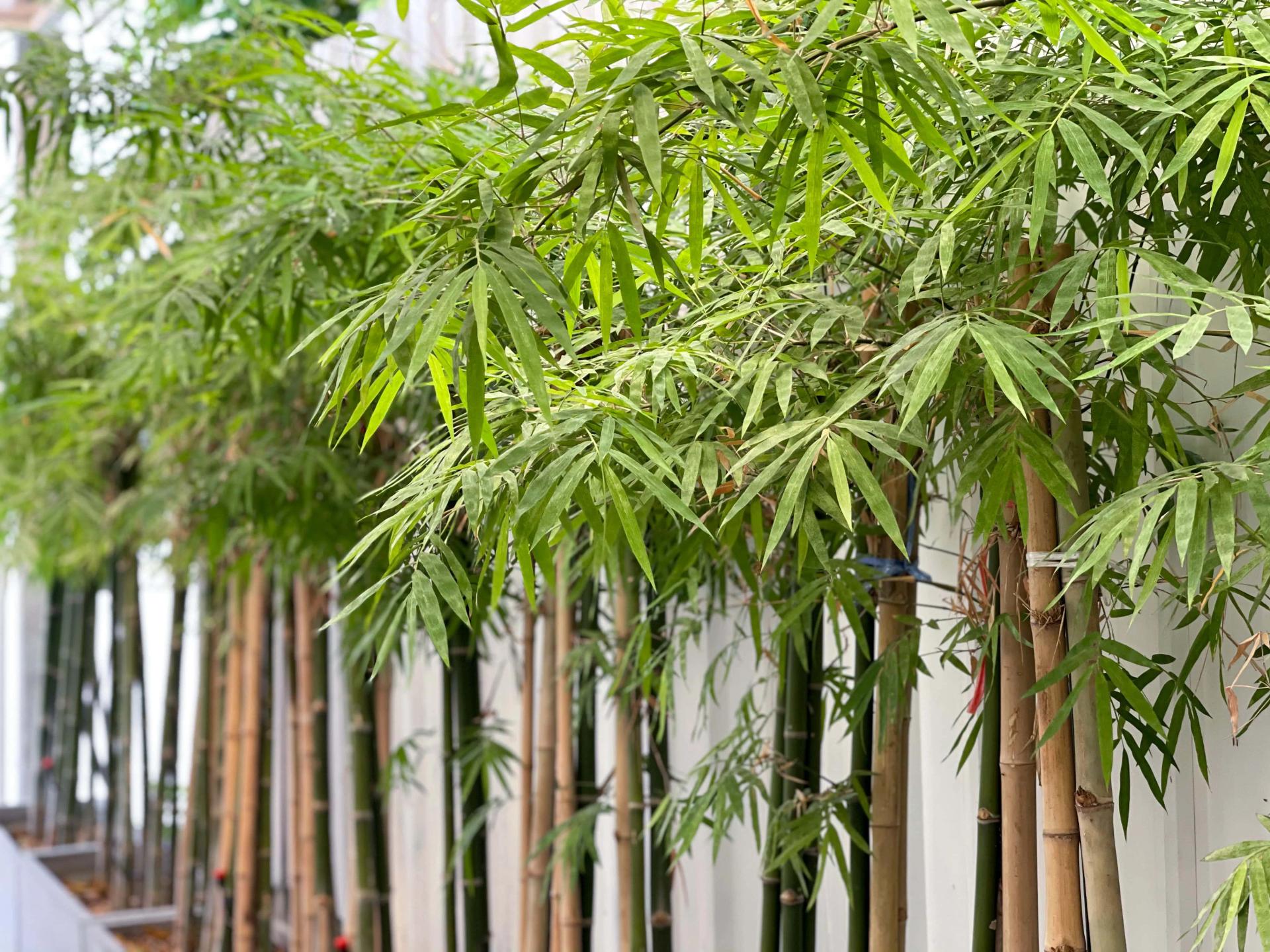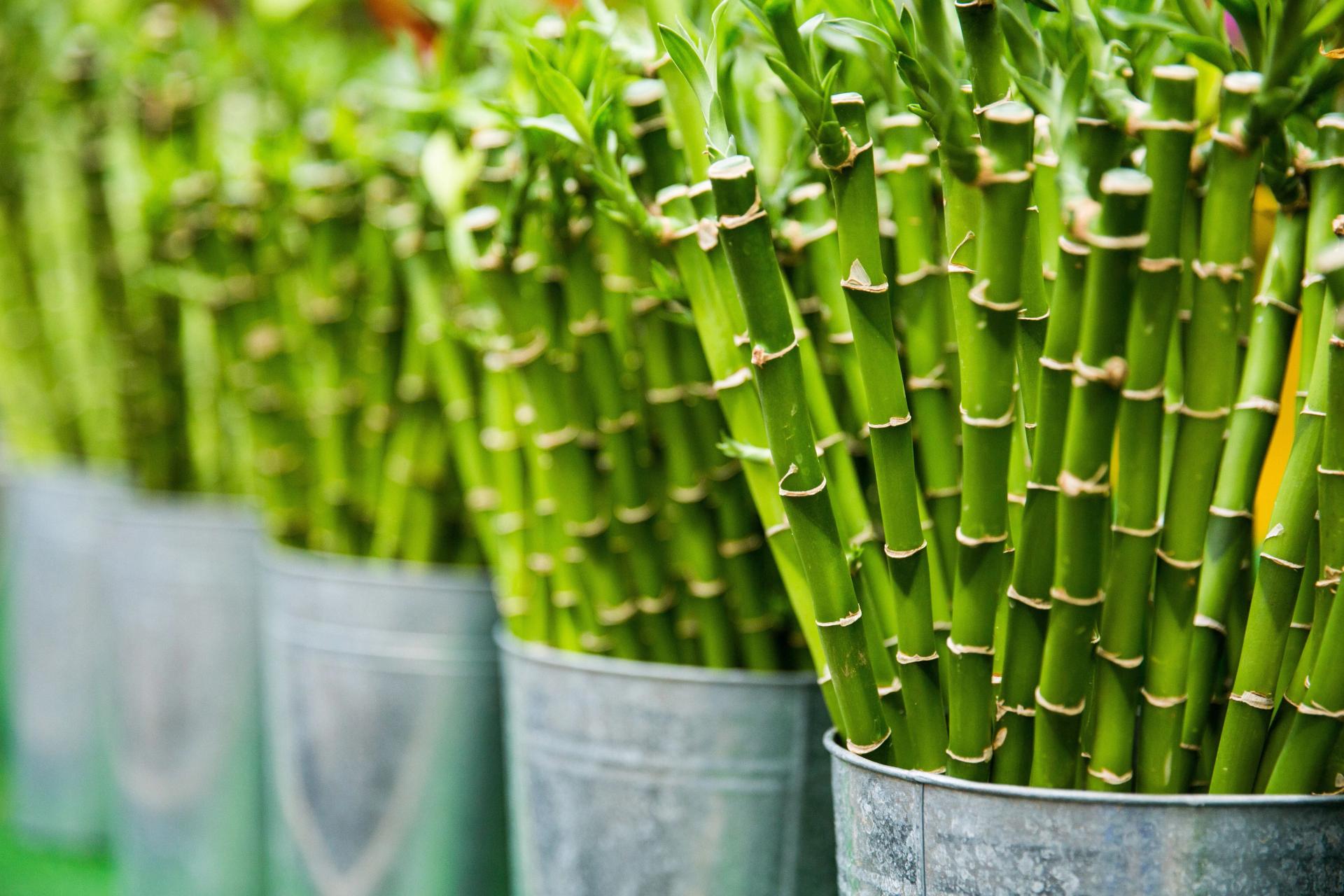Bamboo is a fascinating plant, very unlike the other plants we are accustomed to seeing. One thing everyone seems to know about bamboo is that it is a very fast grower, but how fast does bamboo grow? The answer may be more than you expect!

Does Bamboo Grow Fast? What Is its Growth Rate?
Bamboo is the fastest-growing plant on Earth, to the tune of growing about 35 inches (89 cm) per day or up to 1.5 inches (≈4 cm) per hour for the faster species. That would be about 0.025 inches (0.6 mm) per minute of growth during its initial growth phase. This is also, of course, under ideal growing conditions.
Indoor bamboo plants that don't have their native conditions simulated will likely never have the room to grow to their full potential and are probably going to be very limited in their upwards trajectory if grown indoors as a container plant.

How Fast Does Bamboo Grow?
It can be shocking to see what the bamboo growth speed can be under ideal conditions. Here are some ways to get a better grasp on how fast bamboo grows, broken down into some easily grasped increments:
Per Hour
Some bamboo grows up to 1.5 inches (≈4 cm) per hour, including one of the fastest growing species of bamboo, Tropical Giant bamboo or Dendrocalamus asper. At this rate, that's about a paperclip in size added to the height of the bamboo every hour.
In a Day
Bamboo can grow up to 35 to 40 (90-100 cm) inches per day on average across different species. Once the plant reaches its mature size, this daily rate of growth will slow down. That's approximately as high as 10 stacked popsicle sticks would be.
In a Week
In a week's time, with a bamboo growth rate of 35-40 inches per day (90-100 cm), some faster-growing species of bamboo can reach up to 20 feet (6 m) in a week. That is the average size of a pick-up truck added to the plant's height in just a week!
In a Year
At 20 feet per week (6 m) with 52 weeks in a year, a bamboo tree would be able to grow over 1,000 feet (305 m) tall if it grew at the same rate continuously over the year. This doesn't happen in reality, and instead, bamboo reaches its mature size at about 3 or 4 months old, topping out at 100 to 150 feet tall (30-45 m). This is likely because it would be too difficult to draw nutrients and water up from the soil to the aerial parts of the plant, so the bamboo has to self-edit and keep a "reasonable" height to survive.

Why Does Bamboo Grow so Fast?
You might be wondering how does bamboo grow so fast in addition to why it grows so fast, which are all reasonable questions when you’re confronted with extreme rates of bamboo growing speeds.
Bamboo tree growth occurs so quickly because it starts out growing on the forest floor, shaded out by all of the other older, taller growth. In order to stand a chance and compete with the other plants in the forest, the bamboo has to get to the light and quickly! Bamboo is more concerned with putting on height before putting on girth because it simply needs to prioritize getting sunlight above all else.
Once the bamboo has reached a height where it is no longer in competition with other plants, it will focus on maturing a bit more in size and diameter until it is sufficiently established in its environment. At this stage, developing a thicker stem is important to avoid potentially snapping the stems in adverse conditions.
As for “how” bamboo grows so quickly: that’s still relatively unknown, at least on a molecular level. Scientists have not yet figured out how bamboo cells are able to reproduce and form cell walls so quickly in order to put on the amount of growth they do so rapidly.

How Long Does it Take to Grow Bamboo Full Size?
Most species of bamboo can reach their mature size between two and four months of age due to their speed of growth, though it can take a few years for bamboo plants to fully spread out and establish in an area. The spread in an area will also depend on your bamboo type: running or clumping.
Clumping bamboo takes a bit longer to spread out and usually will only spread a few inches per year. This makes clumping bamboo species easier to contain but longer to fill out an area. Running bamboo can spread up to 20 feet from the original planting site and can spread up to 5 feet per year. This is a good type of bamboo to quickly take over an area, making it invasive in most places.

Ideal Growing Conditions
Bamboo is known to be a quick-growing plant, but it won’t grow to its fullest capacity unless it has the right growing conditions. Below is a list of the best ways to mimic bamboo’s natural habitat for the best bamboo growth:
Soil
Soil should be well-draining and fertile. Avoid dense soil that can easily be waterlogged; these types of soils will need to be amended to be better draining in order to grow most bamboo species. Along a similar vein, dry, nutrient-deprived soils will also need to be amended to include more humusy matter.
Sun
Bamboo best grows in areas with plenty of sun, though some shelter should be provided to protect it from bright afternoon light. Partial light conditions will also be suitable for most bamboo species; essentially, as long as there is very little bright, direct light, your bamboo’s growth will not be hindered.
Watering
Water regularly after transplanting; avoid letting the soil dry out, especially if planting in the summer. Bamboo doesn’t typically tolerate soggy soils, so ensure you plant in an area that drains well with aerated soil. Once the plant is established, it is fairly drought-tolerant, so you may not need to do any supplemental watering if you’re in an area that receives regular rain.
Fertilizing
Fertilize monthly during the growing season when you’re first establishing your bamboo, starting your first dose of fertilizer one month after planting. After the bamboo is established, fertilization is not needed.
Growth Control
Avoid letting your plants grow weedy and invasive, as most bamboo species are capable of. Clump-forming species can be easier to control and will only spread out a few inches every year. Running species are more often the invasive ones, so these should be planted in pots or utilize vertical barriers to keep the bamboo from invading nearby native habitats.
Pruning
Dividing and removing dead canes can help keep your bamboo tidy and aid against pests and diseases, which can thrive in dying or decaying tissues. Sharp shears or even a handsaw (sterilized before use) are best to trim the dead stalks. Make sure you trim at the soil line and make a clean cut. This will make fungal or bacterial infections less likely to attack your bamboo.

FAQ
Is Bamboo the Fastest Growing Plant?
Among the hundreds of varieties of bamboo present on Earth, they are regarded to be the fastest-growing plant we’re aware of so far. This is in part due to its growth habit of growing straight up and maintaining thin stems until its mature height is reached.
What Is the Fastest Growing Bamboo?
The Madake (Phyllostachys reticualta) and Moso (Phyllostachys edullis) are some of the fastest-growing bamboo varieties, which can grow over an inch per hour and max out at 150 feet tall (45 m), with each stem having a diameter of 14 inches (35 cm).
How Big Does Bamboo Get?
One of the largest species of bamboo, Giant bamboo or Guadua giganteus can grow up to 115 feet high (35 m), though other varieties have gotten to 150 feet tall (45 m). It doesn’t seem many species get taller than this, as it is likely not advantageous for the plant to be too tall.
Do you recall the last time you saw bamboo in the area around you? Share your experiences below by commenting on any times you’ve encountered bamboo around you and how quickly it can change the landscape when it’s freshly established!